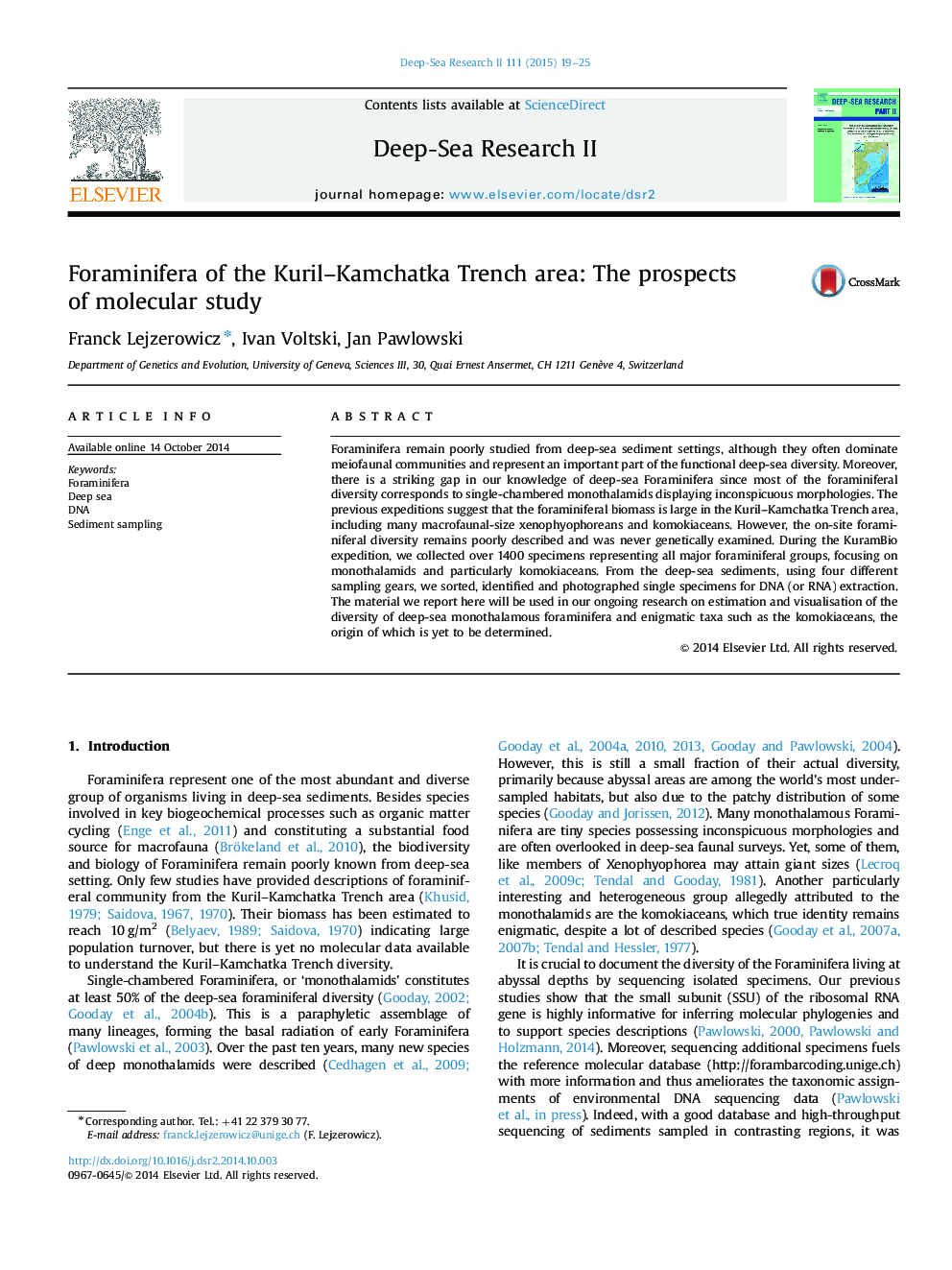| Article ID | Journal | Published Year | Pages | File Type |
|---|---|---|---|---|
| 4536275 | Deep Sea Research Part II: Topical Studies in Oceanography | 2015 | 7 Pages |
Foraminifera remain poorly studied from deep-sea sediment settings, although they often dominate meiofaunal communities and represent an important part of the functional deep-sea diversity. Moreover, there is a striking gap in our knowledge of deep-sea Foraminifera since most of the foraminiferal diversity corresponds to single-chambered monothalamids displaying inconspicuous morphologies. The previous expeditions suggest that the foraminiferal biomass is large in the Kuril–Kamchatka Trench area, including many macrofaunal-size xenophyophoreans and komokiaceans. However, the on-site foraminiferal diversity remains poorly described and was never genetically examined. During the KuramBio expedition, we collected over 1400 specimens representing all major foraminiferal groups, focusing on monothalamids and particularly komokiaceans. From the deep-sea sediments, using four different sampling gears, we sorted, identified and photographed single specimens for DNA (or RNA) extraction. The material we report here will be used in our ongoing research on estimation and visualisation of the diversity of deep-sea monothalamous foraminifera and enigmatic taxa such as the komokiaceans, the origin of which is yet to be determined.
